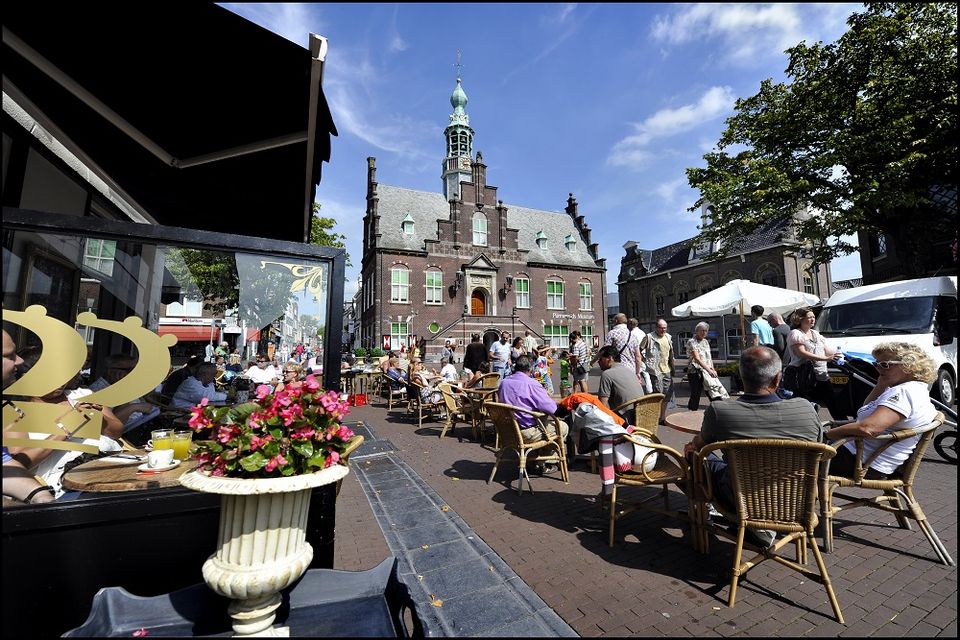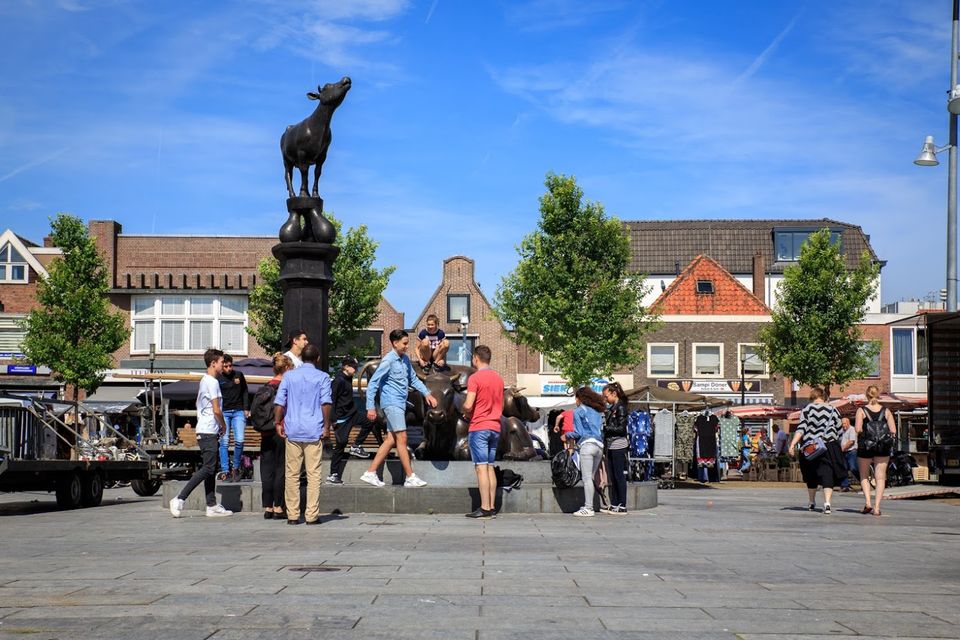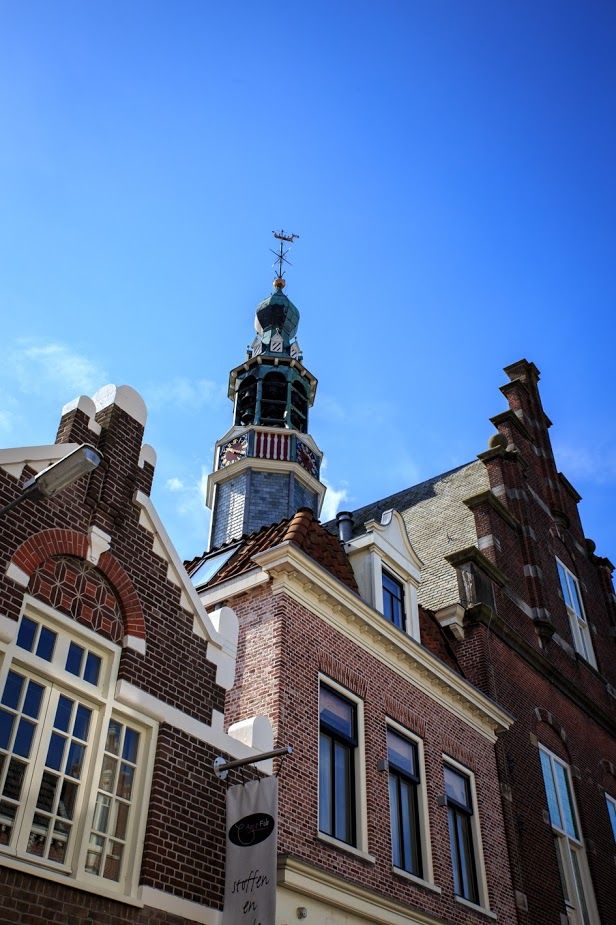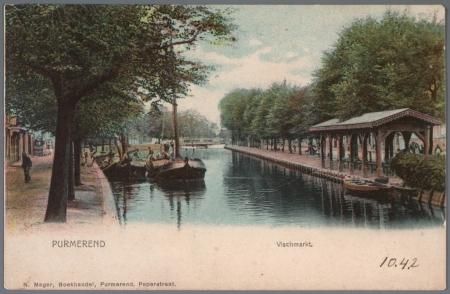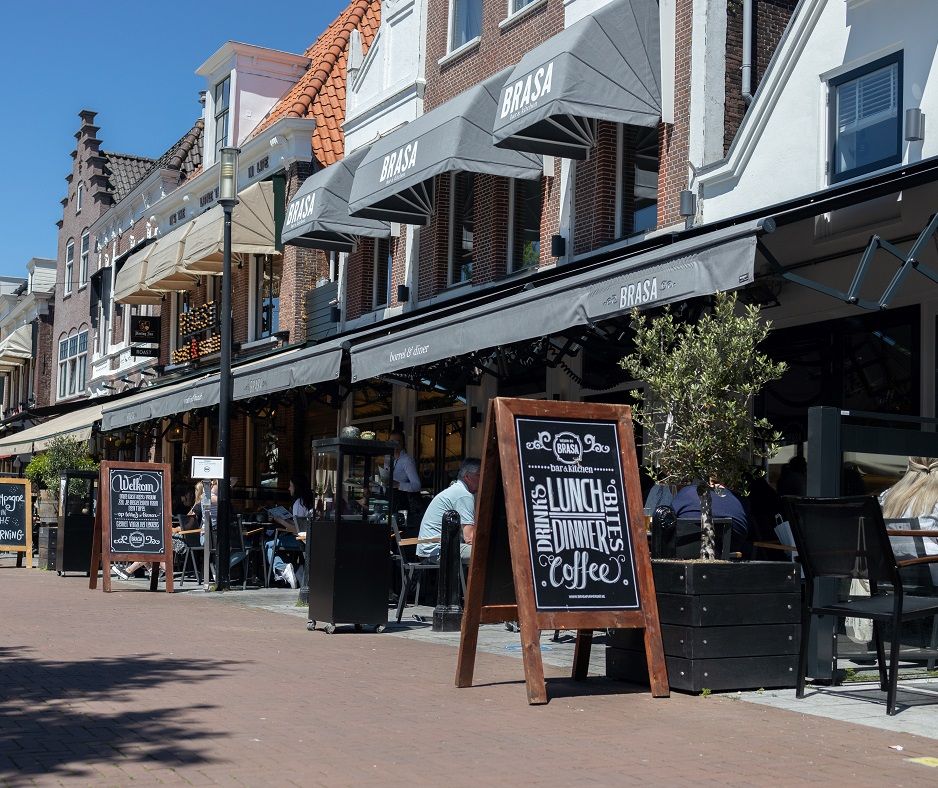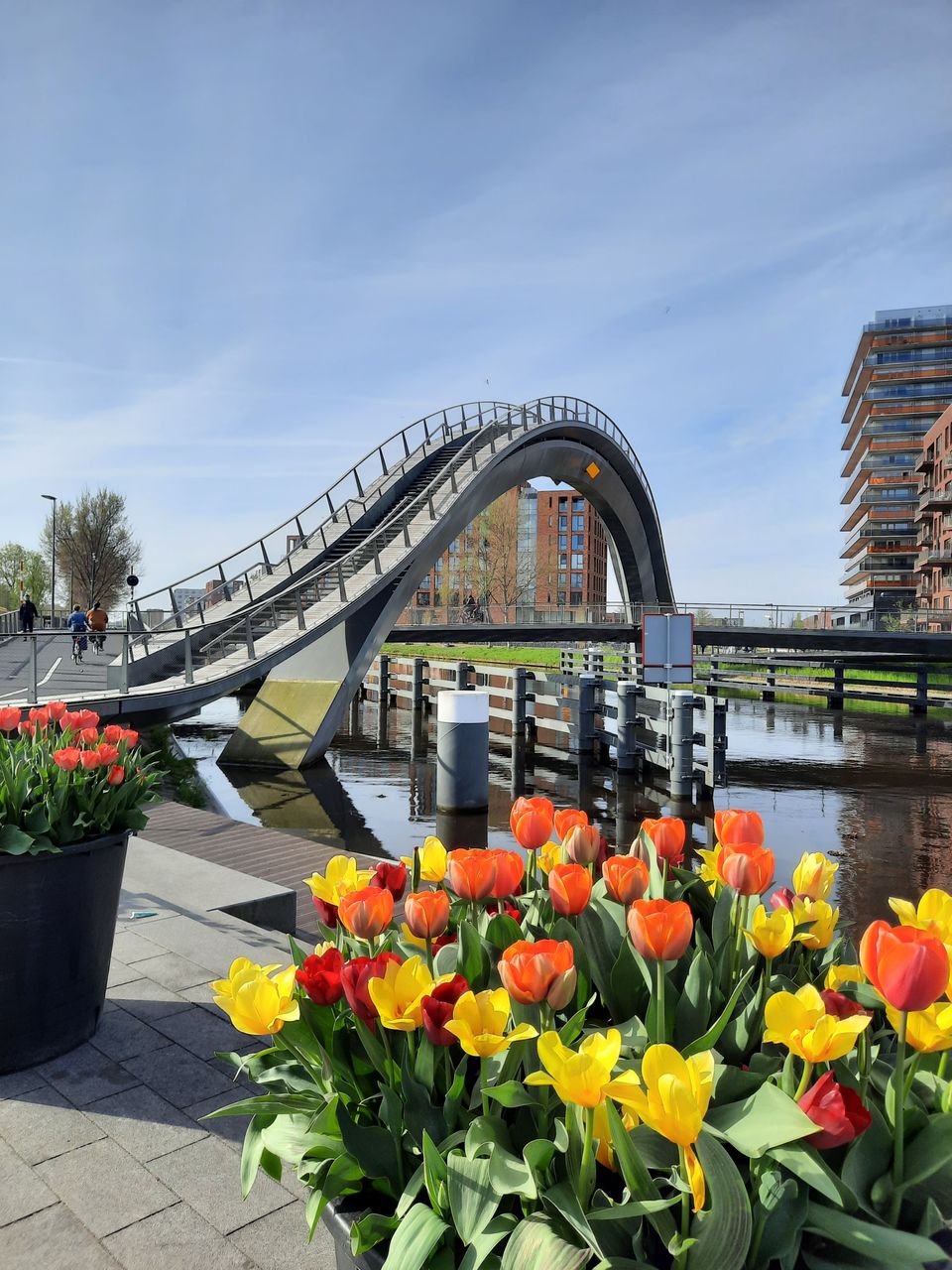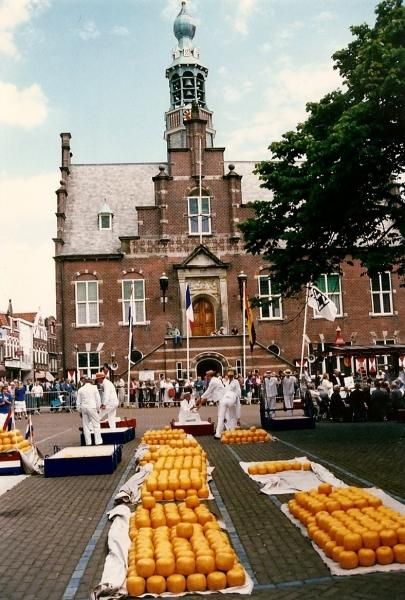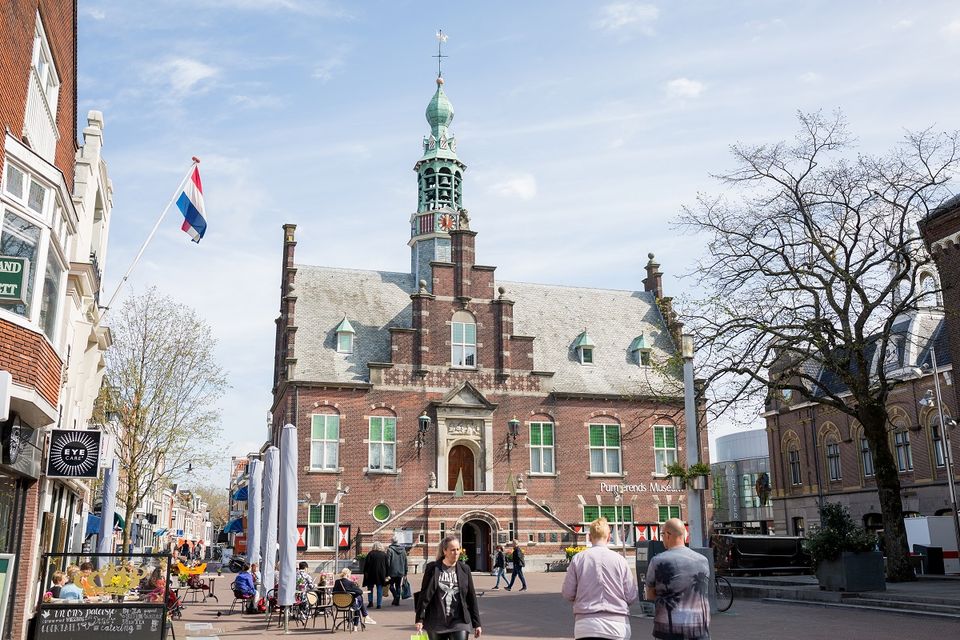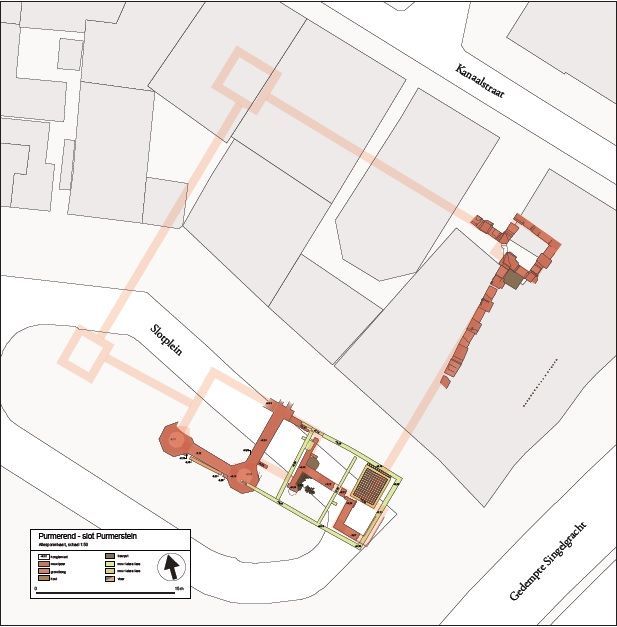Purmerend City Walk
The City Walk goes through the historic heart of Purmerend. Walk past centuries’ old squares and through streets where in the past, merchants noisily traded. Don’t forget to look up: facades tell a story, architectural styles vary.
Route
This route can be followed via the red arrows that can be found on lampposts, traffic posts or route posts and show you the way along the route. The route starts and ends at the TOP (Tourist Transfer Point) on the Beemsterburgwal.
Useful information
The free brochure with routemap is available at the VVV Museum Shop.
Neem alvast een kijkje
Dit ga je zien
Startpunt
TOP Purmerend
Beemsterburgwal
1441 KB Purmerend
Navigeer naar startpunt
Tourist Transfer Point (TOP) Purmerend
TOPs are Tourist Transfer Points. You can park your car at each TOP and then discover the rural surroundings by bike, on foot or by boat.
Tourist Transfer Point (TOP) Purmerend
TOPs are Tourist Transfer Points. You can park your car at each TOP and then discover the rural surroundings by bike, on foot or by boat.
TOP Purmerend is located on the edge of the city center, on the Beemsterburgwal. Purmerend's cycling, walking and boating network come together here, making it the perfect base from which to discover the unique and beautiful locations in Purmerend and the surrounding area.
At each TOP you will find routes on the information column that introduce you to the most beautiful places, the tranquility and nature in Laag Holland. Along the way, there are rest stops and catering establishments at surprising locations. The TOPs will help you find them. The TOPs can be recognized by the green information columns.
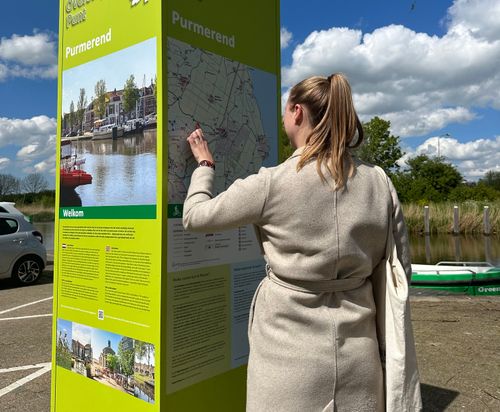
Vismarkt (Fish Market)
When you say Purmerend, you will most likely think of the Koemarkt and the cattle trade. However, until about 1880 Purmerend was mainly known for fishing and the sale of Purmer eel.
Vismarkt (Fish Market)
When you say Purmerend, you will most likely think of the Koemarkt and the cattle trade. However, until about 1880 Purmerend was mainly known for fishing and the sale of Purmer eel.
At that time, Purmerend was located between the not yet reclaimed Beemster, Purmer and Wormer lakes.
The eel caught here in the Where and on the Beemster lake were of very good quality and in great demand. The 'Purmer Ale' (Purmer eel) pamphlets hung on the walls as far as London. The eel was brought to London alive and well in ships with open keels. Here, the city of Purmerend had its own fish auction on the banks of the Thames, where the eel brought in good money.
Of course not all fish went to London, a lot was sold here in Purmerend. Where you are standing nowi s now called the Oude Vismarkt (the Old Fishmarket), the eel was sold here at the fish auction. After the reclamation of the lakes, Purmerend's eel fishing industry was lost. The fish market remained, although in a slimmed-down form. Until about 1880 the fish market on the current Oude Vismarkt was maintained for the sale of fresh fish. After 1880, the fish market moved to the Venediën, opposite the Catholic school. In 1933 the fish market, the oldest market in the city, was closed.

Peperstraat
Together with Hoogstraat and Gouw, the Peperstraat is one of the oldest streets in the city.
Peperstraat
Together with Hoogstraat and Gouw, the Peperstraat is one of the oldest streets in the city.
When you look into the Peperstraat you see that the street literally goes up. The core of Purmerend's city center is elevated from the rest of the city. During the flood disaster of 1916, this ensured that the inhabitants of this part of Purmerend kept their feet dry.
The Three Lakes
Until the beginning of the seventeenth century, Purmerend was still wedged between three large lakes. The Beemster lake in the north, the Purmer lake in the east and the Wormer lake in the west. These lakes were rich in fish and therefore very important for the prosperity and growth of the village into a market town. Around 1900, a baker and confectioner opened a bakery at Peperstraat 9. As you can see, there is still a bakery there today. This building bears the name 'De Drie Meren' (the Three Lakes), because decorative chiseled plaques have been placed above the windows in which the coats of arms of the three surrounding reclaimed lakes have been incorporated.
From left to right you see: the mermaid of the Purmer, to which a legend is attached. The middle one: the cow from the Beemster with a rising sun in the left corner and finally: a sheep with an eel from the Wijde Wormer underneath. Purmerend's coat of arms (three harrows) is proudly displayed above the windows of the second floor.
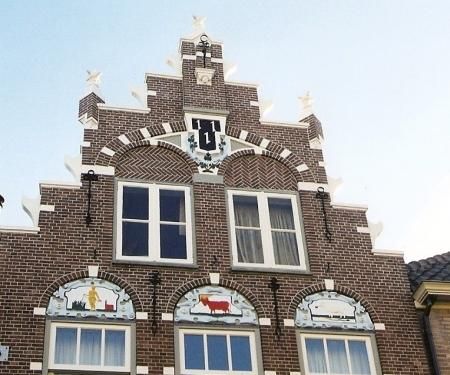
Kerkstraat (Church Street)
You may notice that, despite the name, there is no church here. Many historic buildings have been replaced or have been given a different purpose. This also applies to the building of the former Catholic church.
Kerkstraat (Church Street)
You may notice that, despite the name, there is no church here. Many historic buildings have been replaced or have been given a different purpose. This also applies to the building of the former Catholic church.
The church building was partially demolished and converted into theater “De Purmaryn”. When the rectory and the church houses on the Kerksteeg were also demolished, the Waagplein was created (Source: Jan Dekkers: “Van Kaatjessteeg tot Padjedijk, herkomst van de Purmerendse straatnamen”).
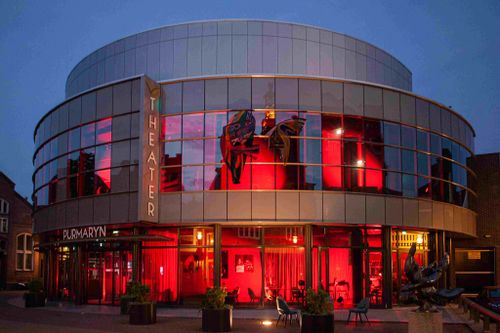
Koemarkt (Cattle Market)
Until the eighties of the last century, Purmerend was a bustling 'Market City'. Every week, the Koemarkt would be full of cattle, ready to be sold.
Koemarkt (Cattle Market)
Until the eighties of the last century, Purmerend was a bustling 'Market City'. Every week, the Koemarkt would be full of cattle, ready to be sold.
But there was much more to do than just cattle trade. How about cheese, fish, sheep and pigs? For each product group, a specific square was allocated in the city, which made for a lively city centre. Tuesday is still market day in Purmerend. The cattle markets are now a thing of the past and that is why the Koemarkt has been given a new use. The Koemarkt has become a centre for gastronomy, with cozy cafes and nice restaurants. Many events also take place here. All of this makes the Koemarkt the 'living room' of the region!
Take a good look at the pavement of the square. Here is another reminder of the earliest history of Purmerend: five stone plaques depicting the history of the Saint Ursula Monastery that was founded on this site in 1392.
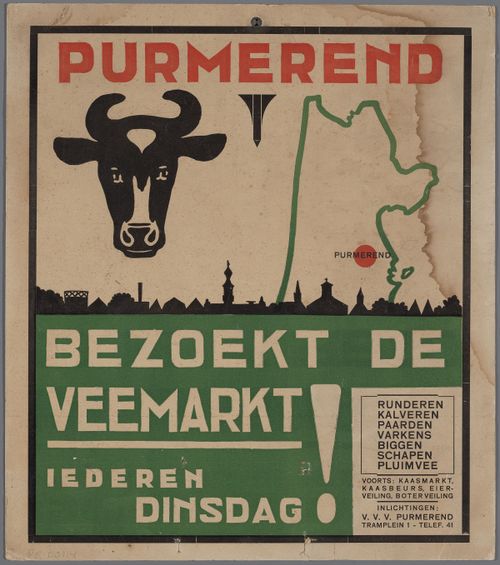
Information panel | Purmer-Poort | Looiersplein
When Purmerend received city status in 1410, ramparts were built around the city and four gates were built on the access roads. These gates were closed at night, making living within the city a lot safer.
Information panel | Purmer-Poort | Looiersplein
When Purmerend received city status in 1410, ramparts were built around the city and four gates were built on the access roads. These gates were closed at night, making living within the city a lot safer.
Anyone wishing to enter the city had to report to the city gate. In this way it was possible to keep evil types, vagabonds and exiles (criminals who were banished as punishment) out of the city.
The eastern entrance gate was built in 1594 and stood at the end of the Koemarkt near the Looiersplein. This gate was called the Purmerpoort (Purmer Gate) because the road behind it, the Purmersteenweg, led to the Purmermeer (Purmer Lake). This gate was built in 1594 and was the last gate to be demolished in 1859. The gate was replaced by two gatehouses, between which an iron gate stood so that the city could still be closed off. The gatehouses disappeared from the townscape around 1900.
The Looiersplein (Tanner Square) owes its name to the fact that a tannery stood here until 1878.
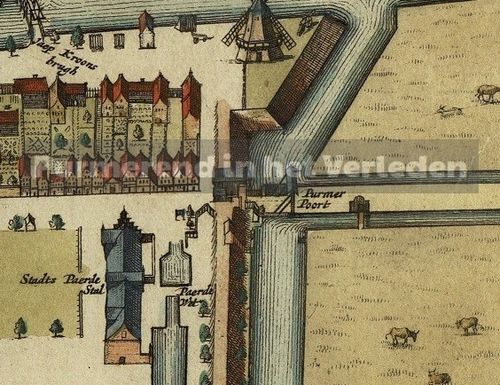
Koemarkt (left side)
Purmerend is centrally located in North Holland. As a result, traders and consumers from all over the province came to Purmerend on Tuesday (market day). Of course, the local population was happy to take advantage of this.
Koemarkt (left side)
Purmerend is centrally located in North Holland. As a result, traders and consumers from all over the province came to Purmerend on Tuesday (market day). Of course, the local population was happy to take advantage of this.
On Monday evening, the expensive furniture was brought up from the living room to the first floor, sand was sprinkled on the ground floors and the houses on the Koemarkt were transformed into real 'Tuesday cafes'. Traders used the cafes as offices where business transactions were handled, of course while enjoying a drink. On this side of the Koemarkt you will find some the nostalgic cafes of the past.
The former Marktmeesterhuisje is also located on this side, which was moved in its entirety in 2018 to make room for the new event location, the Markthal Purmerend.

Information panel | Postbrug | Herengracht
The first building outside the city walls of Purmerend was built around 1900. The impressive mansions on the Herengracht and Emmakade are still here today.
Information panel | Postbrug | Herengracht
The first building outside the city walls of Purmerend was built around 1900. The impressive mansions on the Herengracht and Emmakade are still here today.
A brand new post office was also built. The bridge that connects this neighborhood with the city center was therefore called the Post Bridge. The post office has not been in use for many years, but the name of the bridge has stuck.
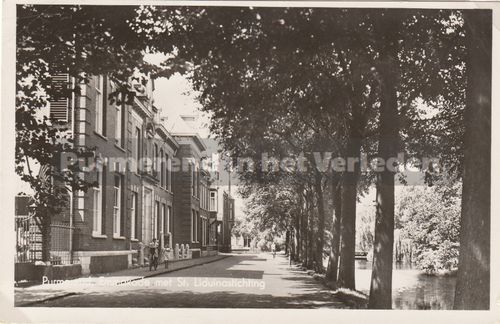
Information panel | Amsterdamsche-Poort | Tramplein
If you look for the tram on Tramplein, you will be disappointed. The name comes from the time when the steam tram from Amsterdam to Alkmaar ran along Purmerend.
Information panel | Amsterdamsche-Poort | Tramplein
If you look for the tram on Tramplein, you will be disappointed. The name comes from the time when the steam tram from Amsterdam to Alkmaar ran along Purmerend.
At the time, you could quickly reach the city center from the Tramplein via one of the city gates. You used to find the Amsterdamsche Poort (Amsterdam Gate) here, one of the city gates of Purmerend, on the access road to and from Amsterdam. So strange to think that the city was actually locked at night about 100 years ago! The Tramplein is now a bus station and still provides a fast connection to the neighboring cities. The current station dates from 2014. The facade of the building has glass panels with historical images of Purmerend.
After 1900, the first buildings were constructed outside the city moat. This started with a post office, but soon whole new neighborhoods followed. The newest expansion of the city can be found on the other side of the legendary 'Melkwegbrug' (Milky Way Bridge). This bicycle and pedestrian bridge connects the old Purmerend with the largest residential area of the city 'Weidevenne'.
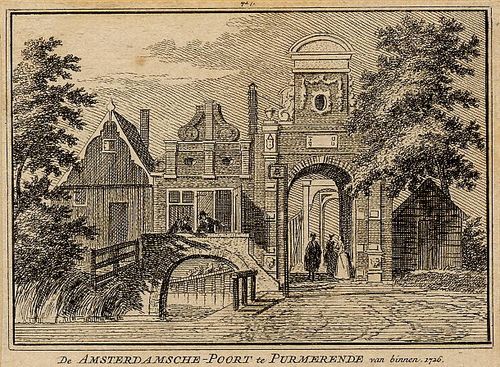
Information panel | Kaasmarkt (Cheese Market)
The Kaasmarkt in Purmerend has a market history of more than 600 years. The first small-scale market was held here in 1484, when it was still called Marktveld and was no more than a small square.
Information panel | Kaasmarkt (Cheese Market)
The Kaasmarkt in Purmerend has a market history of more than 600 years. The first small-scale market was held here in 1484, when it was still called Marktveld and was no more than a small square.
After the reclamation of De Beemster in the early 17th century, the market really started to grow. In order to cope with this growth, a number of things were reorganized in the city. The cattle market was moved to the old Kloosterwerf (now the Koemarkt). The square itself also changed. A few buildings were demolished to make room, the town hall was set back 10 meters, the main church was demolished and even the graveyard was closed and paved for market trade.
Eventually all markets were spread over the city and only cheese was traded on the Kaasmarkt. Up to four million kilos yearly! The Purmerend cheese market was the second largest cheese market in the Netherlands, after Alkmaar. Nevertheless, the Purmerend cheese market was more innovative. In Alkmaar the cheeses were still transported to the Waag on barrows carried by cheese carriers, in Purmerend cheese trays with a set of wheels were used. The backs of the cheese carriers lasted longer in Purmerend!
In the mid-20th century, the industrialization of the dairy industry won the battle over the traditional cheese market. Shortly before 1940, the very last cheese market was held in Purmerend. The success of this has certainly contributed to Purmerend's status as the market town of North Holland. A visit to the Cheese Market is still worth it. You will find terraces, the Nicholas Church and the imposing Purmerends Museum in the old town hall.
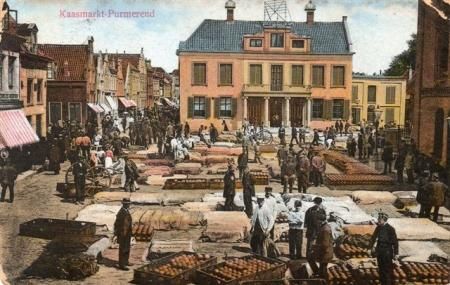
Krommesteeg (Crooked Alley)
It takes some searching to find it, but take a walk through this alley from the Padjedijk.
Krommesteeg (Crooked Alley)
It takes some searching to find it, but take a walk through this alley from the Padjedijk.
Experience the narrow passages of the past and look up at the end of the alley to the left. Here you will find a beautiful authentic wall advertisement.

Information panel | Slot Purmersteijn | Slotplein
The Slotplein is an important, historic place for Purmerend. There is not much left to see now, but this used to be the location of an enormous castle, with large donjons on the corners and huge halls. Even bigger than the Muiderslot!
Information panel | Slot Purmersteijn | Slotplein
The Slotplein is an important, historic place for Purmerend. There is not much left to see now, but this used to be the location of an enormous castle, with large donjons on the corners and huge halls. Even bigger than the Muiderslot!
The important administrative and military center Slot Purmersteijn was built in 1410 by the wealthy banker Willem Eggert. As treasurer of Holland and Zeeland, he was one of the most powerful men in the county. He used his power to tackle fraud and bribery within the Dutch nobility. Under his leadership, West Friesland, Texel and the Kop van Noord-Holland were liberated from the tyranny of the nobles and most villages became self-governing.
Eggerts actions were not appreciated by the nobles. During his life he received many angry letters from the Dutch nobility. After his death, his family was rejected by this group. Because of this, the name Eggert has no further relevance in Purmerend history. The castle also came back into the hands of the noble families, who left the management entirely to a castellan. Over the centuries, Slot Purmersteijn became a hated symbol of the power of the castellan and in particular the Prince of Orange. When the opportunity presented itself, the regents of Purmerend demolished the castle in 1741.
On the castle square, where the entrance to the castle was originally, you will only find a replica of a part of the castle wall.

Tourist Transfer Point (TOP) Purmerend
TOPs are Tourist Transfer Points. You can park your car at each TOP and then discover the rural surroundings by bike, on foot or by boat.
Tourist Transfer Point (TOP) Purmerend
TOPs are Tourist Transfer Points. You can park your car at each TOP and then discover the rural surroundings by bike, on foot or by boat.
TOP Purmerend is located on the edge of the city center, on the Beemsterburgwal. Purmerend's cycling, walking and boating network come together here, making it the perfect base from which to discover the unique and beautiful locations in Purmerend and the surrounding area.
At each TOP you will find routes on the information column that introduce you to the most beautiful places, the tranquility and nature in Laag Holland. Along the way, there are rest stops and catering establishments at surprising locations. The TOPs will help you find them. The TOPs can be recognized by the green information columns.

